~HENRY DAVID THOREAU . . THE MORGAN LIBRARY & MUSEUM
heads up: LAST 2 WEEKS . . this EVER, EVER, EVER . . NEW / SELF.
‘THIS EVER NEW SELF . . THOREAU and HIS JOURNAL’
JUNE 2 – SEPT 10, 2017
THE MORGAN LIBRARY & MUSEUM, 225 MADISON AVE, NYC
see: THIS EVER NEW SELF – THOREAU & HIS JOURNAL / MORGAN LIBRARY EXHIBIT NOTES & IMAGES
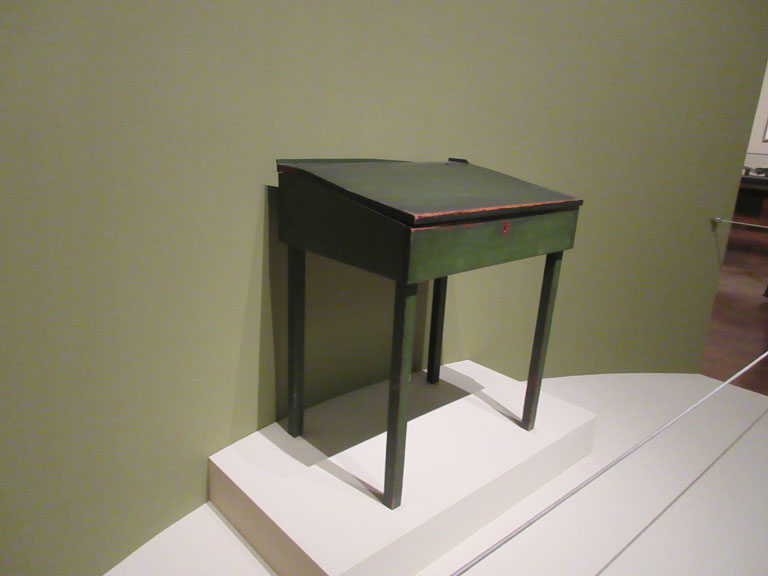
EXHIBITION TEXT:
‘THOREAU’S DESK . . .
Thoreau wrote most of the thousands of pages of his journal while seated at this simple desk. It likely cost a dollar or two when he and his brother, John, purchased it from a local carpenter for use in the school they were setting up together. After the school closed, Thoreau claimed the desk, and each time he moved, the desk went with him. Though he wasn’t one to lock his door, he did lock his desk, securing the journals that meant so much to him. By the end of his life (1817-1862), however, when he was living with his family on Concord’s Main Street, the journal had grown far too extensive to fit inside the desk’s compartment.’
Eastern white pine, painted green.
Concord, Massachusetts, ca. 1838.
Concord Museum, Gift of Cummings E. Davis, 1886; TH10

EXHIBITION TEXT:
‘THE PEN BROTHER HENRY LAST WROTE WITH . . .
Henry Thoreau died of tuberculosis on 6 May 1862. He was forty-four. He had almost always written with a quill rather than a steel-nibbed pen. His sister Sophia saved this one. To mark its importance, she attached a tag inscribed with the words quoted above.’
One of Thoreau’s goose quill pens
Accompanying note written by his sister Sophia Thoreau (1819-1876)
Concord Museum, Gift of Cummings E. Davis, 1886; TH10.13A
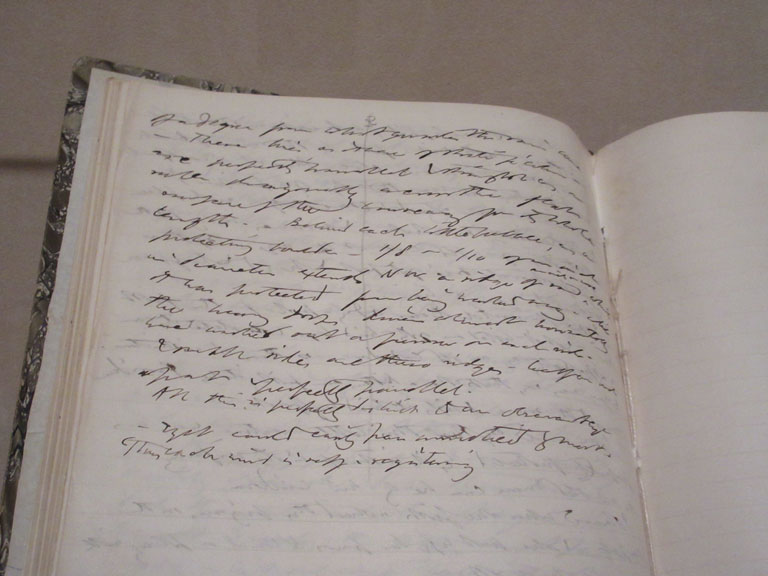
EXHIBITION TEXT:
‘IN THE JOURNAL: THE END . . .
This is the last of some ten thousand pages of Thoreau’s journal. He made his final entry in November 1861 after a violent rainstorm. He was paying attention, as he had done all his life, to ordinary details and seeing what conclusions he could draw. He looked at the gravel in the railroad causeway and noted the patterns made by the rain. “I can tell within a small fraction of a degree from what quarter the rain came,” he wrote. “All this is perfectly distinct to an observant eye – & yet could easily pass unnoticed by most. Thus each wind is self-registering.” The second half of the notebook is empty. He died six months later.’
Henry D. Thoreau (1817 – 1862)
Journal, 23 November 1860-3 November 1861
(open to final entry)
The Morgan Library & museum. Purchased by Pierpont Morgan, 1909.
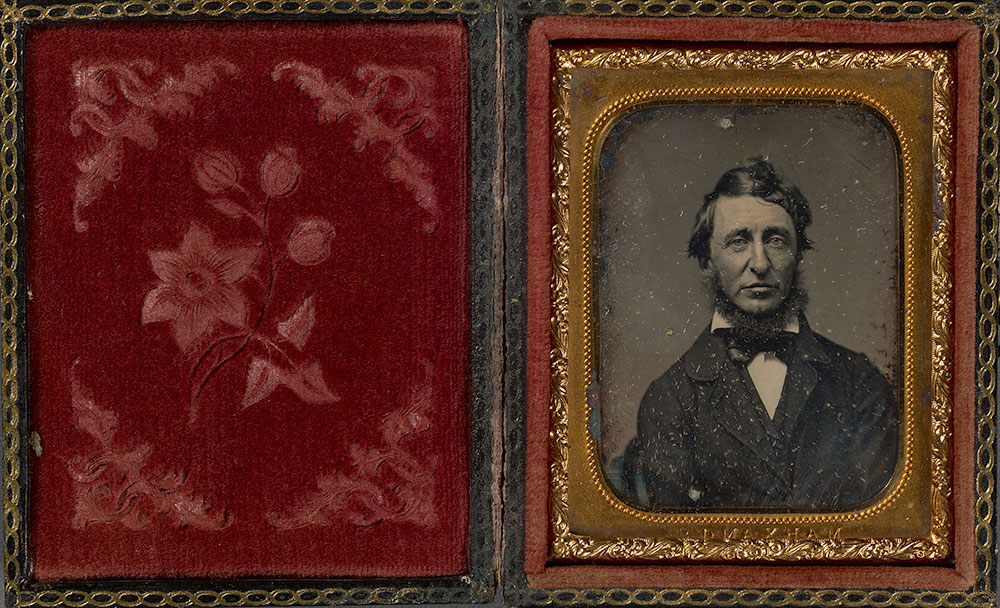
PHOTO VIA MORGAN LIBRARY
EXHIBITION TEXT:
What if we could daguerreotype our thoughts & feelings!
– 11 December 1855
‘THE LAST SITTING . . .
Thoreau sat for this final portrait at the request of his friend Daniel Ricketson. After Thoreau died nine months later, Ricketson sent one of the two ambrotypes taken that day to Thoreau’s sister Sophia. “What is rather remarkable.” he wrote to her, “is that it shews scarcely at all Henry’s loss of health, suffering deeply as he was at the time it was taken, from his disease.” What did Sophia think of it ? “I need not tell you,” she responded, “for I cannot, how agreeably surprised I was on opening the little box, to find my own lost brother again. I could not restrain my tears. The picture is invaluable to us. I discover a slight shade about the eyes expressive of weariness, but a stranger might not observe it.”
Edward Sidney Dunshee (1823-1907)
Henry D. Thoreau
Ambrotype. New Bedford, Massachusetts, 21 Augist 1861
Concord Museum, gift of Mr. Walton Ricketson and Miss Anna Ricketson, 1929; TH33a
of an earlier daguerrotype portrait taken in 1856:
‘Many of us recognize Thoreau’s face today because at age thirty-eight he agreed to step into Maxham’s Daguerrean Palace in Worcester, Massachusetts, to have his picture taken. The technology was introduced in the late 1830s, just after Thoreau had begun to keep a journal. In one of his earliest entries, he compared the daquerreotypist to the poet: both required “perfect stillness, though but for an instant,” in order to record an impression. “There is something analogous,” he wrote, “in the birth of all rhymes.”
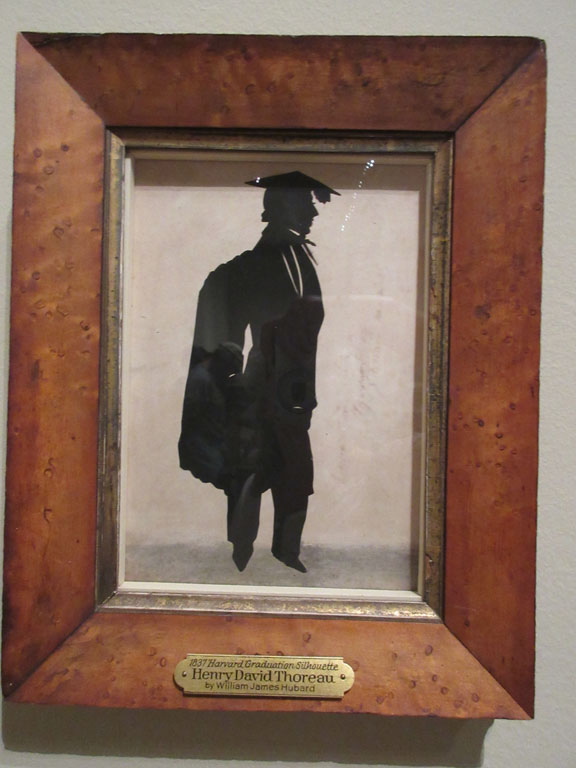
EXHIBITION TEXT:
‘THE GRADUATE. . .
William James Hubard (1807 – 1862)
Henry David Thoreau, 1837
Cut Paper Silhouette Portrait
Inscribed on the verso, Henry David Thoreau Harvard 1837 / Wm.J.Hubard, profilist.
The Neil and Anna Rasmussen Collection
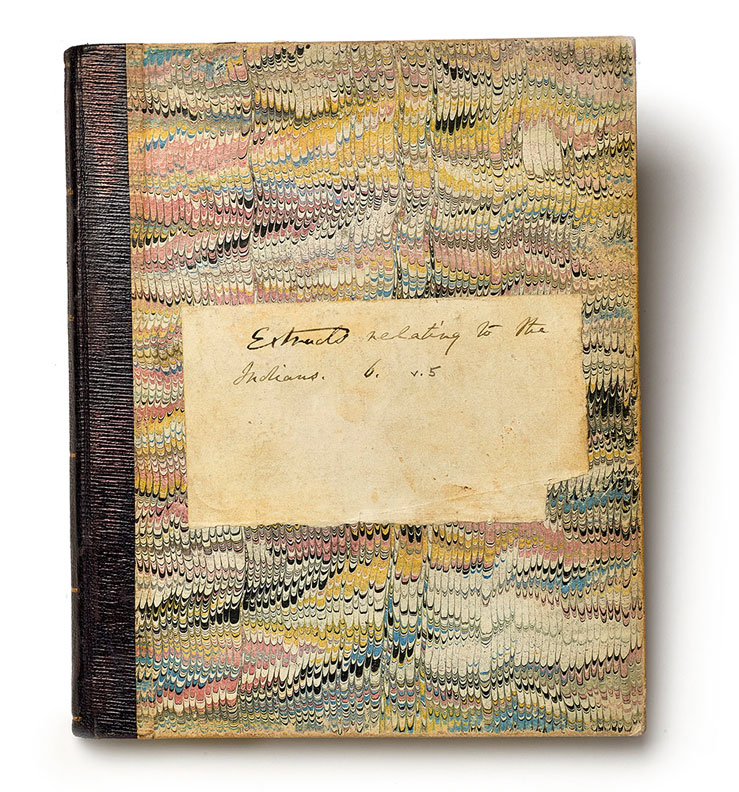
One of Henry D. Thoreau’s research notebooks on North American indigenous cultures, ca. 1847-61.
The Morgan Library & Museum, purchased by Pierpont Morgan, 1909.
Photo via Morgan Library
EXHIBITION TEXT:
Henry D. Thoreau (1817-1862)
Research notebooks on North American indigenous cultures, ca. 1847-61.
“Some have spoken slightingly of the Indian – as a race possessing so little skill or wit….It frequently happens that the historian though he professes more humanity than the trapper – mountain man or gold digger who shoots one as a wild beast [in] reality exhibits & practices a similar inhumanity to him – wielding a pen instead of a rifle.”
HENRY D. THOREAU, 3 FEBRUARY 1859
PHOTOS: NANCY SMITH / UNLESS OTHERWISE NOTED
